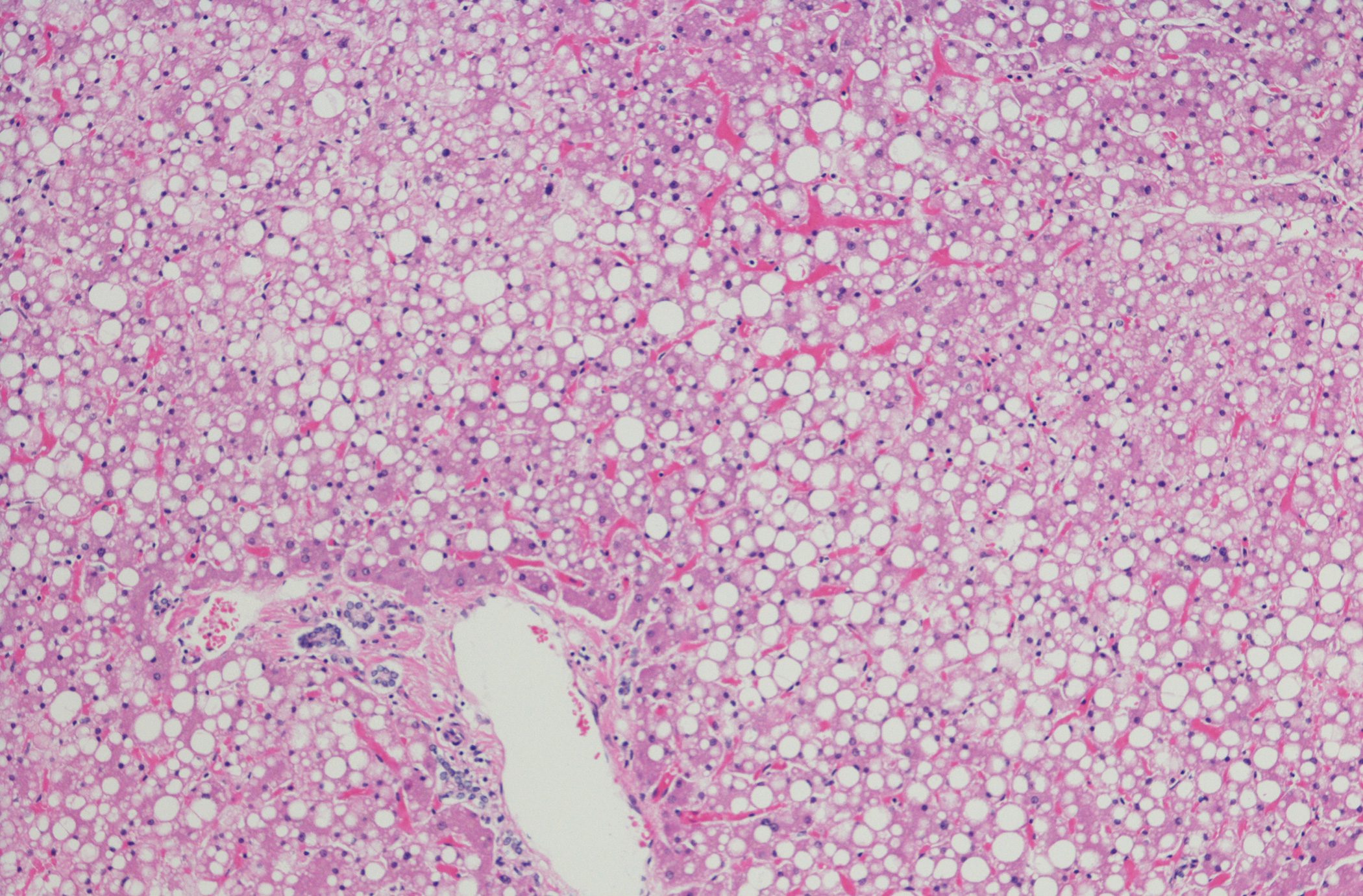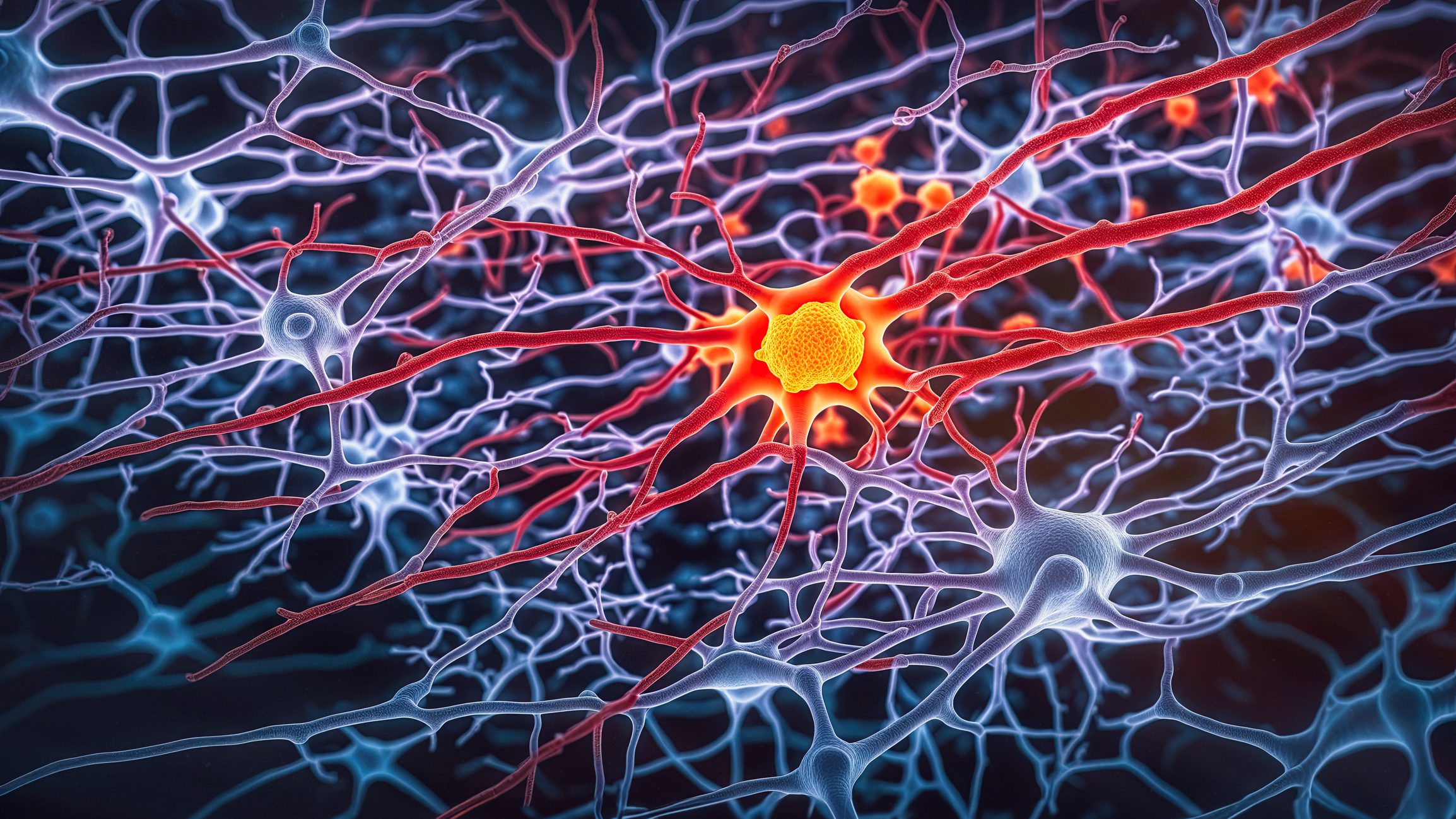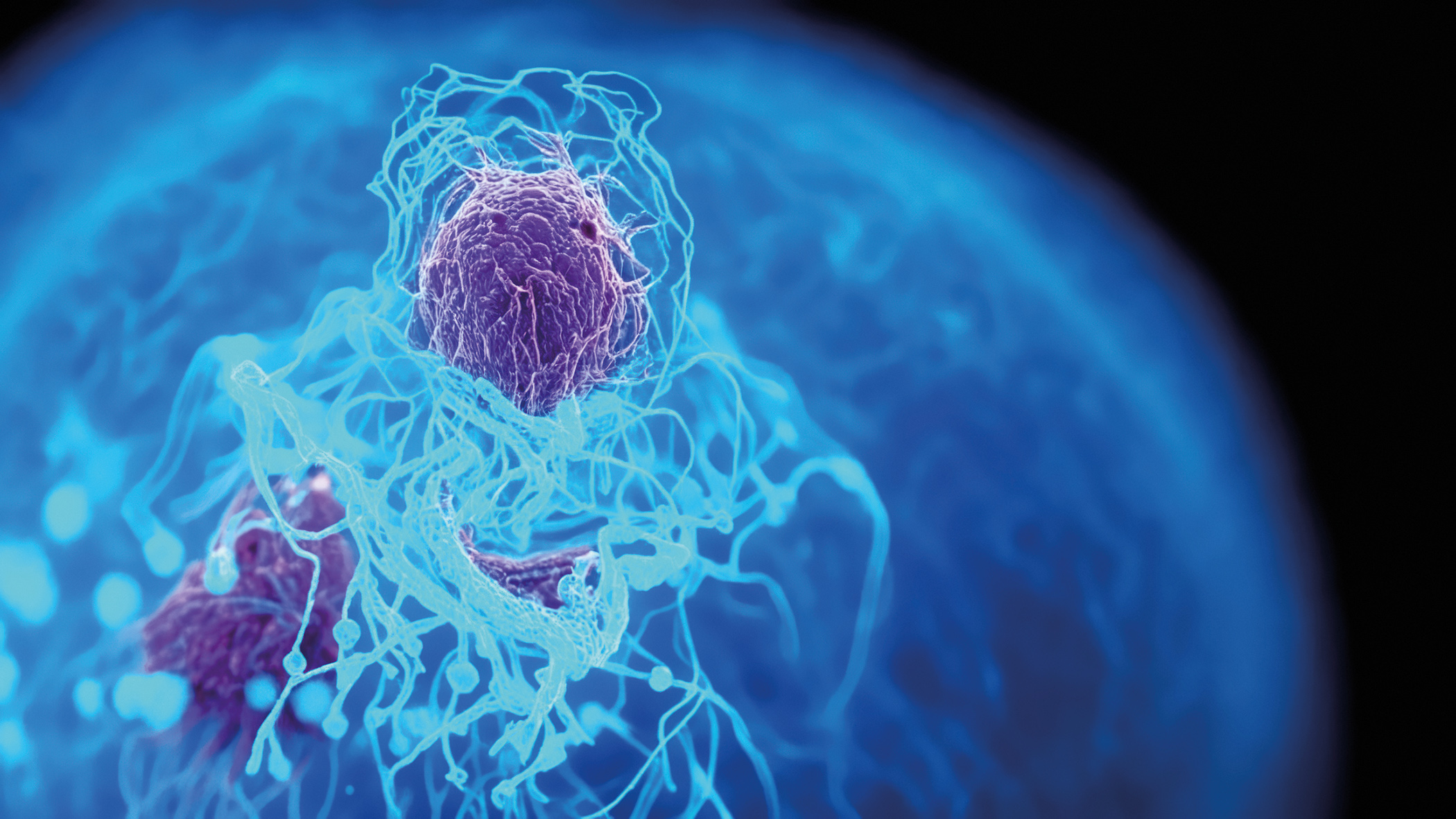Anemia is a common but underestimated and consequently inadequately treated problem in tumor patients. Anemia has a major impact on patients’ quality of life, treatment, and prognosis. Unfortunately, anemia is treated in only 40% of cases. In the palliative situation, treatment with erythropoietin is efficient. On the one hand, it reduces the frequency of transfusions and, on the other hand, it increases the quality of life of the patients. In patients treated with curative intent, the indication for treatment with EPO should be made cautiously, as locoregional control and overall survival were worse in several studies. The alternatives in this situation are iron treatment and transfusion.
Worldwide, 14.1 million people develop cancer each year, and it is the second leading cause of death in developed countries [1]. In Switzerland, 35,000 new cancer cases and 16,000 cancer deaths are registered each year [2].
Anemia is a common problem of tumor disease. For patients, it is associated with impaired quality of life and it impacts mental health and social activities.
Epidemiology
The prevalence of anemia in cancer is highly variable and depends on several factors: tumor type, definition of anemia (Hb <9 g/dl vs. <11 g/dl), tumor stage, and whether and how the patient is treated.
A 2004 prospective epidemiologic study, the European Cancer Anemia Survey (ECAS), examined the prevalence, severity, and treatment of anemia in 15 367 patients in 24 European countries [3]. The prevalence was 39.3% at study entry (Hb <10.0 g/dL, 10%) and increased to 67% during the six-month study (Hb <10.0 g/dL, 39.3%). A low hemoglobin level correlated significantly with poorer general health. Only 38.9% of patients received anemia treatment (17.4% EPO, 14.9% transfusions, and 6.5% iron).
Pathophysiology, causes, diagnostics
The causes of anemia in tumor patients are diverse and often multifactorial (Table 1).

First, it may be due to myelosuppressive chemotherapy or radiotherapy. On the other hand, by the decreased erythropoietin (Epo) production in chronic renal diseases (renal insufficiency, postrenal obstruction by tumors, renal cell carcinoma).
Most commonly, however, anemia is directly tumor-associated or -induced and can be divided into three pathophysiologic categories: decreased production, accelerated breakdown, and blood loss [4].
Reduced production
- In hemato-oncological tumors, erythropoiesis may be displaced by the other pathological cell series (lympho- or myeloproliferative disorders, myeloma, acute leukemias), and in solid tumors by the bone marrow metastases. In myelodysplastic syndrome, maturation is also disturbed. Diagnostically, the other cell series are also affected in the peripheral blood smear; in tumor metastases or fibrosis, a leuko-erythroblastic blood picture (erythroblasts and immature myeloid precursors) is also seen. Bone marrow aspiration is usually necessary to make the diagnosis.
- Erythropoiesis is also inhibited by tumor-associated inflammatory processes (“anemia of chronic disease”, ACD) [5]. Three pathophysiologic mechanisms are discussed: (a) Suppression of renal Epo production by inflammatory cytokines (interferon Y, TNF-α), (b) additional inhibition of erythroid progenitor cell proliferation and decreased response to Epo, (c) Inhibition of iron release from the RES, liver, and duodenum, which is thus not available for erythropoiesis. A central role is played by hepcidin, which inhibits ferroprotein (responsible for flushing iron out of the cell).
- The ACD is mostly normocytic to microcytic, and the reticulocyte count is normal to slightly decreased. Serum ferritin and CRP are elevated, transferrin saturation is decreased, and soluble transferrin receptor is within normal limits, in contrast to true iron deficiency (transferrin receptor elevated).
- Vitamin B12 , folic acid and iron deficiencies (nutritive, blood loss, st. n. gastrointestinal surgery, folic acid antagonists) can also lead to decreased Ec production.
- Rarely, in tumors of the thymus, hemato-oncological diseases or after erythropoietin substitution due to autoimmune dysregulation, a lack of new formation of erythroblasts (“pure red cell aplasia”) is seen.
Accelerated degradation
Autoimmune hemolytic anemias of the cold or warm type, which result in rapid erythrocyte depletion, are seen primarily in lymphoproliferative neoplasms but rarely in solid tumors. Some cytostatic drugs may also cause hemolysis, especially in patients who already have glucose-6-phosphate dehydrogenase deficiency.
Microangiopathic hemolytic anemia (MAHA) is a paraneoplastic syndrome characterized by Coombs-negative hemolytic anemia, fragmentocytes on blood smear, thrombocytopenia, renal insufficiency, and signs of disseminated intravascular coagulation. It is often associated with metastatic mucin-forming solid tumors, less commonly with lymphoma [6].
Blood loss
Gastrointestinal or urogenital tumors in particular can lead to occult or manifest bleeding. Iron deficiency anemia is often an initial symptom of tumor disease. The anemia is microcytic, hypochromic, sometimes accompanied by reactive thrombocytosis. Ferritin is low, as is transferrin saturation, but soluble transferrin receptor is elevated as a sign of increased erythroblasts in the bone marrow.
An overview of the recommended laboratory diagnostics is shown in Table 2.

Anemia as a prognostic factor
Anemia is usually an expression of advanced tumor disease and consequently an indication of a poorer prognosis. This is evident, for example, in lymphomas and in myelodysplastic syndrome, where anemia has found its way into risk classification and thus into prognosis: Examples are the Hasenclever Index (IPS) in Hodgkin lymphoma, the International Prognostic Index (IPI) in aggressive lymphomas, and the International Prognostic Scoring System (IPSS) in MDS. In renal cell carcinoma, it has been shown that patients with anemia have a significantly worse prognosis (3-year survival 51.2% in patients with anemia and 81.6% in patients without anemia, respectively) [7].
Tumor hypoxia in anemic patients also reduces the efficacy of radiotherapy. This has been demonstrated in various studies, especially in patients with head/neck tumors (locoregional control 30 vs. 73% and overall survival 35 vs. 85%) [8] and in the treatment of cervical carcinoma (5-year survival 74% with Hb above 120 mg/dl resp. 45% with Hb below 110 g/dL) [9].
Therapy options
Substitution of iron, vitamin B12 and folic acid: In principle, iron deficiency anemia, vitamin B12 deficiency or folic acid deficiency must always be ruled out or excluded in the treatment of anemia, even in patients with tumor disease. to treat. The therapy is carried out parenterally, since absorption is not guaranteed and oral substitution is often poorly tolerated. An increased need for folic acid should be noted in patients with chronic hemolysis and with folate antagonists (e.g., hydroxyurea, methotrexate, and pemetrexed) and substituted accordingly.
Transfusions: For many years, blood transfusion has been the primary treatment for tumor-associated therapy. In principle, transfusion should be performed only when hemoglobin drops to 7-8 g/dl. Transfusion should be considered if rapid correction due to hypoxia is needed and in symptomatic patients with erythropoietin-refractory anemia. With an erythrocyte concentrate, hemoglobin is increased by 1 g/dl. The life span of transfused erythrocytes is 100-110 days. In addition, 200 mg of iron is supplied per EC concentrate; however, this is not available for erythropoiesis until after 90 days. Therefore, in case of iron deficiency, iron should be administered even in case of EC transfusion. Disadvantages of transfusion include: allergic reactions, especially including TRALI (“transfusion related acute lung injury”), infections, immunosuppression, volume and iron overload, and risk for thrombosis (especially in patients with a history of thromboembolic events and on steroid or hormone therapy).
Erythropoietin: Erythropoietin (EPO) is the main therapy for tumor-associated anemia. EPO is indicated for chemotherapy-associated anemia with an Hb <10.5 g/dL. Target hemoglobin is a value around 12 g/dL. Higher Hb levels are associated with an increased risk of thromboembolic events. The preparations epoetin alfa and beta and darbepoetin are available. Hematologic response (Hb increase of 2 g/dL) is achieved in 55-65% of cases. Functional iron deficiency is often seen in patients on EPO; with concomitant iron supplementation, the response to EPO is increased (to 80%) [10]. If hemoglobin does not respond after four weeks on epoetin and after six weeks on darbepoetin (Hb <1 g/dL), the dose should be increased. If the Hb increases in the following two weeks >1 g/dL or the desired Hb level is achieved, the dose or treatment frequency may be reduced. However, after dosage escalation resp. no response is achieved after six to eight weeks of continuous EPO administration, therapy must be stopped accordingly. In addition, EPO administration should be definitely stopped six to eight weeks after chemotherapy. Administration of erythropoietin significantly reduces transfusion rates (RR 0.67); this is especially true in solid tumors and less marked in hematologic tumors or MDS. Quality of life improves significantly under EPO and fewer patients suffer from fatigue. However, the risk of thromboembolic events is increased during therapy with EPO even under correct indication (13 vs. 6%) [11].
Because EPO has been shown to worsen overall survival and locoregional control in some controversial studies [11], the FDA restricted EPO administration to patients with non-curative disease in 2008. In Switzerland, this restriction does not exist. To date, no study has also stratified patients according to curative or palliative treatment. However, the German Hodgkin Study Group has investigated treatment with EPO during intensive chemotherapy and found that it is safe and reduces the number of transfusions, but has no effect on quality of life or survival. has the fatigue.
Literature:
- World Health Organization (WHO): http://globocan.iarc.fr/Pages/fact_sheets_cancer.aspx.
- National Institute for Cancer Epidemiology and Registration (Nicer): www.nicer.org/assets/files/Krebs_in_der_Schweiz_e_web.pdf.
- Ludwig H, et al: The European Cancer Anaemia Survey (ECAS): A large, multinational, prospective survey defining the prevalence, incidence and treatment fo anaemia in cancer patients. Eur J Cancer 2004; 40: 2293-2306.
- Gaspar BL, et al: Anemia in malignancies: Pathogenetic and diagnostic considerations. Hematology 2015; 20(1): 18-25.
- Weiss G, Goodnough LT: Anemia of chronic disease. N Engl J Med 2005; 352(10): 1011-1023.
- Lechner K, et al: Cancer-related microangiopathic hemolytic anemia: clinical and laboratory features in 168 reported cases. Medicine 2012; 91: 195-205.
- Mozayen M, et al: Prognostic significance of degree of anemia in renal cell carcinoma. J Clin Oncol 2012; Abstract 469.
- Brizel DM, et al: Oxygenation of head and neck cancer: changes during radiotherapy and impact on treatment outcome. Radiother Oncol 1999; 53: 113-117.
- Grogan M, et al: The importance of hemoglobin levels during radiotherapy for carcinoma of the cervix. Cancer 1999; 86; 1528-1536.
- Henry DH, et al: Intravenous ferric gluconate significantly improves response to epoetin alfa versus oral iron or no iron in anemic patients with cancer receiving chemotherapy. The Oncologist 2007; 12: 231-242.
- Bohlius J, et al: Cancer-related anemia and recombinant human erythropoietin-an updated overview. Nature Clinical Practice 2006; 3: 152-164.
InFo ONCOLOGY & HEMATOLOGY 2015; 3(6): 20-23.












